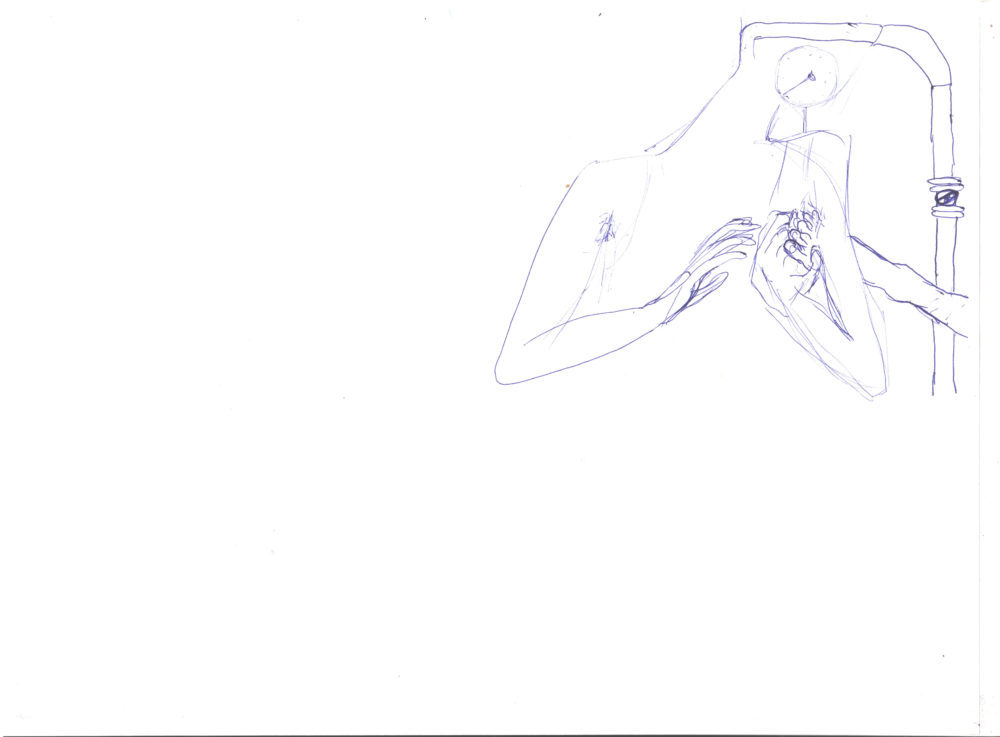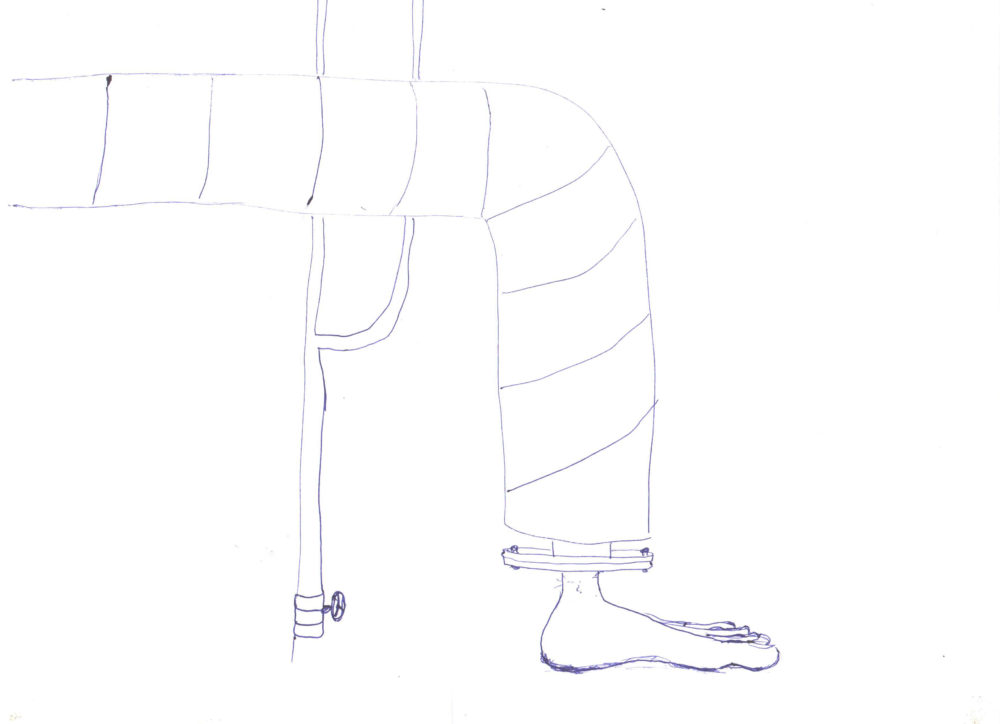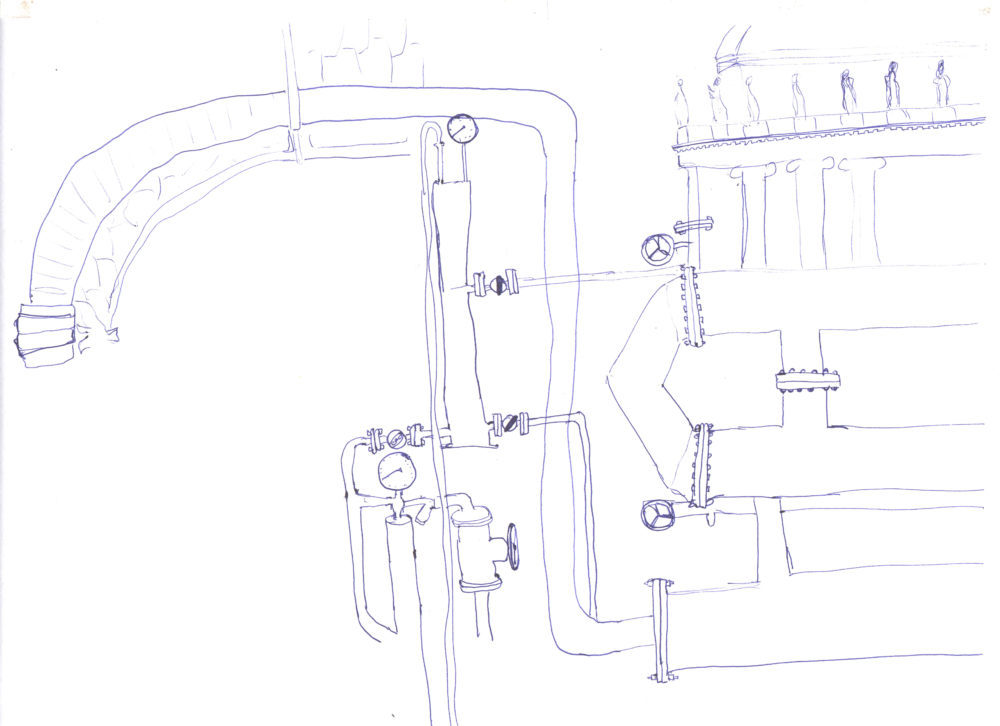drawings
В моем представлении мамина работа называлась Насутки или Сутки-через-трое и находилась за высоченными воротами Адмиралтейства. Вернувшись оттуда, мама подолгу спала на диване, а я ползала по ней и приподнимала ей веки, чтобы посмотреть, что ей снится. Сутки-через-трое были огромной котельной с гигантскими котлами, перебинтованными, как слоновьи ноги трубами, и множеством железных лесенок и уровней, по котором я поднималась, преодолевая страх, как юнга на мачту. Шторм оглушительно шумел в каждом котле, и моя мама каждый час проверяла цвет воды в стеклянных пробирках и показания датчиков, чтобы он не вырвался наружу и не убил нас, котят, кошек, напарников-алкашей и бесчисленных мальчиков-курсантов, которые оказались не в обещанном фасадными нимфами захватывающем морском приключении, а на разбитом асфальтированном плацдарме. Мне не удалось найти ни одной фотографии оттуда. Пришлось зарисовать по смутной памяти.









